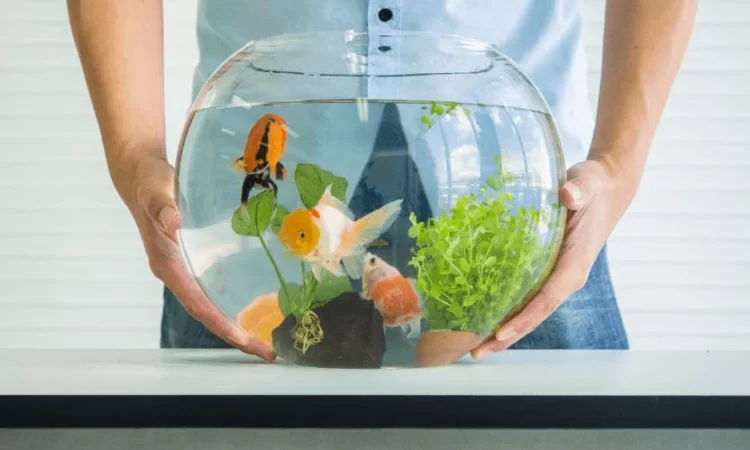
Tropical fish are among the most popular pets for both novice and experienced aquarists due to their vibrant colors, fascinating behaviors, and the serene beauty they bring to any home. However, potential fishkeepers often wonder, “Is tropical fish easy to take care of?” The answer can vary depending on several factors, including the species of fish, the tank setup, and the commitment to maintenance. This article will explore the ease of caring for tropical fish and provide insights into making the experience enjoyable and successful.
Understanding Tropical Fish
Diverse Species: Tropical fish encompass a wide variety of species from different parts of the world, primarily from freshwater and marine environments. Popular freshwater species include guppies, bettas, tetras, and angelfish, while marine species include clownfish, tangs, and gobies.
Habitat Requirements: Tropical fish require specific water conditions to thrive. This includes maintaining appropriate water temperature, pH levels, and water hardness, which mimic their natural habitats.
Factors That Influence Care Difficulty
Species Selection: Some tropical fish species are easier to care for than others. For beginners, hardy and adaptable species such as guppies, platies, and mollies are recommended. These species are more forgiving of minor mistakes in water quality and diet.
Tank Setup: The size and setup of the aquarium play a significant role in the ease of care. A larger tank (20 gallons or more) is generally easier to maintain than a small one because it offers more stable water conditions and can accommodate a community of fish.
Water Quality: Maintaining good water quality is crucial for the health of tropical fish. This involves regular water changes, filtration, and monitoring of ammonia, nitrite, and nitrate levels. Poor water quality can lead to stress and disease.
Feeding: Tropical fish have varied dietary needs. While many species can thrive on high-quality commercial flake or pellet food, some require live or frozen foods for optimal health. Understanding and meeting these dietary requirements is essential.
Tank Mates: Compatibility between tank mates is important. Some species are peaceful and can coexist with others, while some are aggressive and territorial. Researching and choosing compatible fish can prevent stress and injury.
Basic Care Guidelines for Tropical Fish
Setting Up the Tank:
- Cycling the Tank: Before adding fish, it’s essential to cycle the tank. This process establishes beneficial bacteria that help break down waste, creating a stable environment for the fish.
- Temperature Control: Use a reliable heater to maintain a consistent water temperature suitable for tropical fish, typically between 75-80°F (24-27°C).
- Filtration: A good filtration system is necessary to keep the water clean and oxygenated. Choose a filter appropriate for the size of your tank.
Feeding:
- Balanced Diet: Provide a varied diet that includes flake or pellet food, supplemented with live, frozen, or freeze-dried foods like brine shrimp, bloodworms, or daphnia.
- Feeding Schedule: Feed your fish once or twice a day, providing only what they can consume in a few minutes to avoid overfeeding and water contamination.
Water Maintenance:
- Regular Water Changes: Perform partial water changes (10-20%) weekly to maintain water quality and remove toxins.
- Water Testing: Regularly test water parameters (pH, ammonia, nitrite, nitrate) to ensure they are within safe levels.
Health Monitoring:
- Observation: Observe your fish daily for signs of illness, such as changes in behavior, appetite, or appearance. Early detection of problems can prevent serious health issues.
- Quarantine: Quarantine new fish before adding them to your main tank to prevent the spread of disease.
Common Challenges and Solutions
Algae Growth: Algae can quickly overrun a tank if not managed. Control algae by avoiding overfeeding, maintaining proper lighting, and performing regular water changes. Adding algae-eating fish or invertebrates, like snails and shrimp, can also help.
Disease Prevention: Tropical fish are susceptible to various diseases. Maintain good water quality, provide a balanced diet, and avoid overcrowding to reduce the risk. If disease occurs, treat it promptly with appropriate medications.
Behavioral Issues: Aggression and stress can result from incompatible tank mates or inadequate space. Research the social behaviors of each species and provide hiding places to reduce stress.
Maintaining Equipment: Regularly clean and check your equipment, such as filters, heaters, and lights, to ensure they are functioning correctly and efficiently.
Benefits of Keeping Tropical Fish
Aesthetic Appeal: Tropical fish add vibrant colors and dynamic movement to your home, creating a visually pleasing and tranquil environment.
Educational Experience: Keeping tropical fish can be an educational experience, teaching responsibility, biology, and the importance of maintaining a balanced ecosystem.
Stress Relief: Watching fish swim gracefully can be a relaxing and stress-relieving activity, providing mental health benefits.
Conclusion
While caring for tropical fish does require a commitment to maintaining their environment and meeting their needs, it can be a manageable and rewarding endeavor. By choosing the right species, setting up a proper tank, and adhering to basic care guidelines, even beginners can successfully keep tropical fish. The key is to stay informed, be observant, and enjoy the process of creating a healthy and vibrant aquatic world for your fish.




